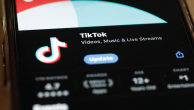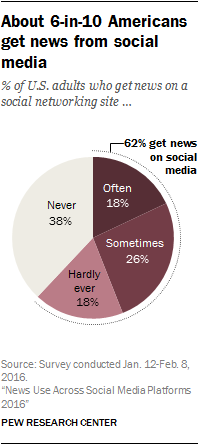
A majority of U.S. adults – 62% – get news on social media, and 18% do so often, according to a new survey by Pew Research Center, conducted in association with the John S. and James L. Knight Foundation. In 2012, based on a slightly different question, 49% of U.S. adults reported seeing news on social media.1
But which social media sites have the largest portion of users getting news there? How many get news on multiple social media sites? And to what degree are these news consumers seeking online news out versus happening upon it while doing other things?
As part of an ongoing examination of social media and news, Pew Research Center analyzed the scope and characteristics of social media news consumers across nine social networking sites. This study is based on a survey conducted Jan. 12-Feb. 8, 2016, with 4,654 members of Pew Research Center’s American Trends Panel.
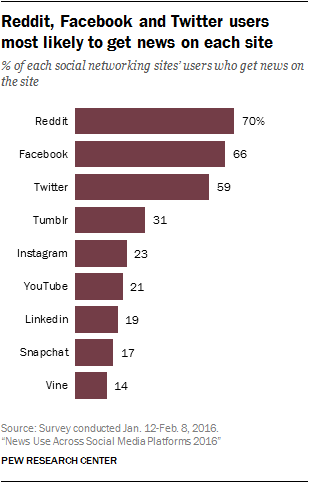
News plays a varying role across the social networking sites studied.2 Two-thirds of Facebook users (66%) get news on the site, nearly six-in-ten Twitter users (59%) get news on Twitter, and seven-in-ten Reddit users get news on that platform. On Tumblr, the figure sits at 31%, while for the other five social networking sites it is true of only about one-fifth or less of their user bases.
It is also useful to see how, when combined with the sites’ total reach, the proportion of users who gets news on each site translates to U.S. adults overall. Facebook is by far the largest social networking site, reaching 67% of U.S. adults. The two-thirds of Facebook users who get news there, then, amount to 44% of the general population. YouTube has the next greatest reach in terms of general usage, at 48% of U.S. adults. But only about a fifth of its users get news there, which amounts to 10% of the adult population. That puts it on par with Twitter, which has a smaller user base (16% of U.S. adults) but a larger portion getting news there.
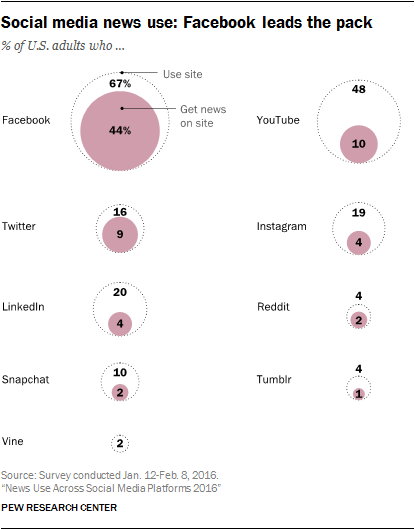
The audience overlap
To what extent do the various news audiences on social media overlap? Of those who get news on at least one of the sites, a majority (64%) get news on just one – most commonly Facebook. About a quarter (26%) get news on two of those sites. Just one-in-ten get news on three or more.
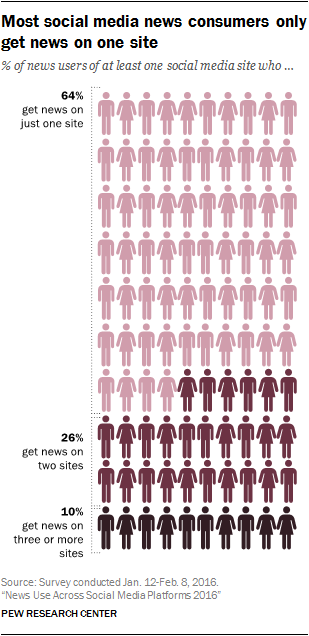
Seeking out news online
Differences also emerge in how active or passive each group of news users is in their online news habits more generally. YouTube, Facebook and Instagram news users are more likely to get their news online mostly by chance, when they are online doing other things. Alternatively, the portion of Reddit, Twitter and LinkedIn news users who seek out news online is roughly similar to the portion that happen upon it.3
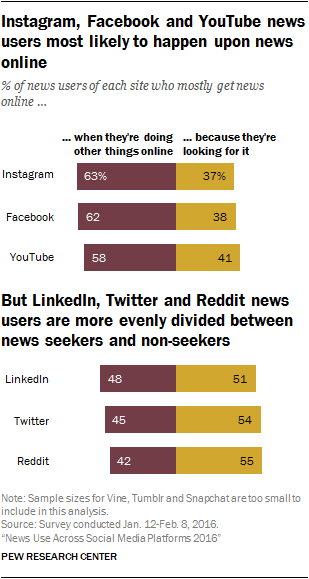
The demographics of social media news consumers
A look at the demographic characteristics of news consumers on the five social networking sites with the biggest news audiences shows that, while there is some crossover, each site appeals to a somewhat different group. Instagram news consumers stand out from other groups as more likely to be non-white, young and, for all but Facebook, female. LinkedIn news consumers are more likely to have a college degree than news users of the other four platforms; Twitter news users are the second most likely. The demographics of other sites can be found in the Appendix.
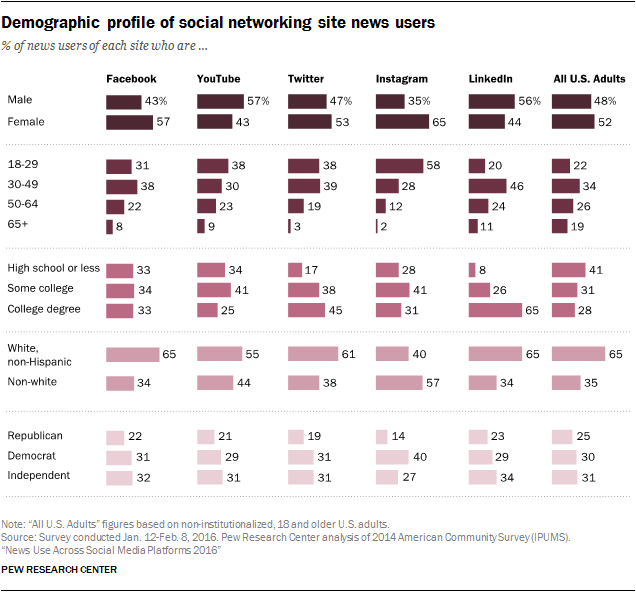
Social news consumers and other news platforms
Social media news consumers still get news from a variety of other sources and to a fairly consistent degree across sites. For example, across the five sites with the biggest news audiences, roughly two-in-ten news users of each also get news from nightly network television news; about three-in-ten turn to local TV. One area that saw greater variation was news websites and apps. Roughly half of Twitter and LinkedIn news consumers also get news from news websites and apps, while that is true of one-third of Facebook and YouTube news users.
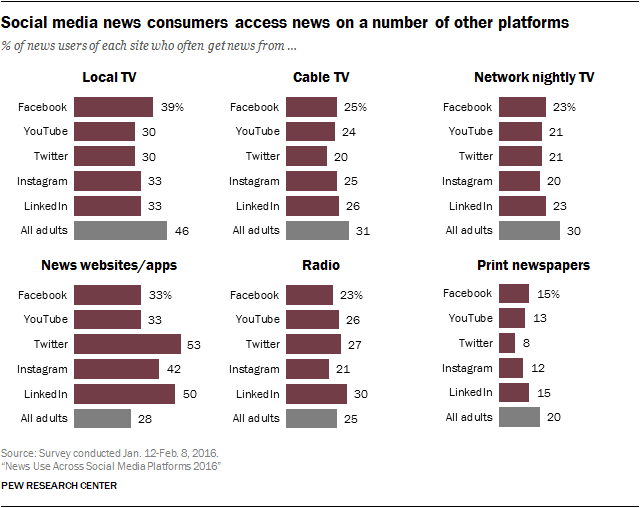
Changes over time
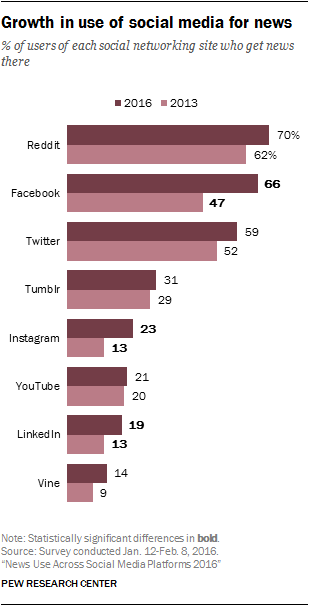
This report is an update to a 2013 report, with the addition of Snapchat and the removal of three sites: Pinterest, which has been shown to have a small portion of users who use it for news; Myspace, which has largely transitioned to a music site; and Google+, which through its recent transformations is being phased out as a social networking site. For the sites analyzed in both 2013 and 2016, a few significant differences emerge.
Of the sites we tracked since 2013, three of eight show an increase in the portion of users who get news there: Facebook, Instagram and LinkedIn.4
The full 2013-2016 trends for usage and demographics can be found in the Appendix.


